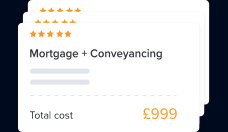
From major cities like London and Manchester to up-and-coming regions in North and Wales, the UK features diverse property markets to match different investor budgets and strategies. Property prices in the UK average around £284,000 as of early 2023, down slightly from £288,000 at the end of 2022.
The North East of England stands out for its affordability and strong yields, with average property prices under £180,000. Cities like Sunderland, Middlesbrough, and Durham are home to major universities, providing a steady tenant demand. Scotland also offers opportunity, with a median house price of £190,000.
In this article, you will learn about UK property options, their taxes, and the differences between investing in the UK and the European property market.
Spectrum of Property Investment Options in the UK
Here's an overview of some of the most common investment property types:
Buy-to-Let Property
Buy-to-let properties are residential properties purchased to rent out to tenants. The target audience for buy-to-let is investors who want to generate regular rental income. Investors make money from buy-to-let by collecting monthly rent payments from tenants. Appreciation of the property value over time also adds to the return. Buy-to-let properties in the UK require hands-on management but can generate stable cash flow if rented consistently.
Purpose-Built Student Accommodation (PBSA)
PBSA is student accommodation designed and built specifically to rent out to students, usually with 3-12 month tenancy agreements tied to the academic year. Investors generate income by collecting rental payments directly from student tenants.
With the UK hosting one of the world’s highest proportions of international students. Well-located PBSA near campuses is attractive to students and can result in high occupancy rates.
Houses in Multiple Occupation (HMO)
HMOs target working professionals, students, and contractors seeking affordable shared housing. Investors convert residential properties into smaller rooms to rent out individually. Rental income is generated from multiple tenant rents, while investors benefit from higher yields than standard buy-to-let.
Buy-to-Sell Property
Buy-to-sell property targets buyers in the open residential property market. Investors purchase residential properties, renovate or redevelop them, and then sell at a profit. The aim is to generate a sizable return on investment within a short period through the margin between the purchase and sales price.
Tax Considerations in Property Investment
Understanding the various tax obligations can help you make the most of your investment and avoid unwanted surprises. Here are some of the main expenses and taxes that property investors will face in the UK:
Stamp Duty Land Tax (SDLT)
One of the first expenses you'll face when purchasing a property is SDLT. It's a tax levied on the purchase price of the property. In England and Northern Ireland, SDLT has a tiered structure, with rates of 0%, 5%, 10%, and 12% depending on the value of the property. There is a 0% SDLT on properties under £250,000. Ensure you understand which rate will apply to your purchase to properly budget for this tax.
Income Tax
Any rental income you generate from the property will be subject to income tax. You'll need to declare the rental income and may owe income tax on the profits. The rate will depend on your overall tax bracket.
After allowable expenses, the profit will be taxed at your marginal rate of income tax — currently 20%, 40%, or 45% depending on your total income level. If you earn below £12,570, it will be considered as personal allowance, and you won't be charged with income tax.
Capital Gains Tax (CGT)
You may need to pay CGT on any profit when you sell a property. It's charged at 18% for basic rate taxpayers or 28% for higher rate taxpayers. Any profits from property sales are in addition to your regular income and may push you into a higher tax bracket.
With good planning, property investment can still yield decent returns after tax. However, working with a tax advisor is highly recommended to optimise your tax position.
Differences in UK Real Estate Investing and Europe
Here are the key differences that shape these markets and influence investment decisions:
Market Dynamics
There is strong demand across the UK for residential properties in major cities and commercial real estate, especially in London, which stands out as a global financial and business hub.
Across Europe, some real estate markets exhibit robust growth and stability akin to the UK, especially in countries like Germany, France, and the Nordics. However, other European countries may experience more fluctuations in prices and returns, depending on local economic factors.
Regulatory Environment
The UK has a well-established legal framework for real estate investment, providing clarity and stability for investors. The procedures for transactions like purchases, sales, and leases are generally straightforward compared to other countries.
In Europe, the regulatory environments can vary significantly from one country to another. Investors must navigate differences in property laws, tax regulations, ownership structures, and other factors from market to market. The Vienna real estate market stands out as one of the beacons of opportunity in the European real estate sphere.
In Summary
The UK real estate market is on the rise. Understanding the main property types and taxation laws will enable you to decide whether this market is worth your attention and investments.




Make a comment